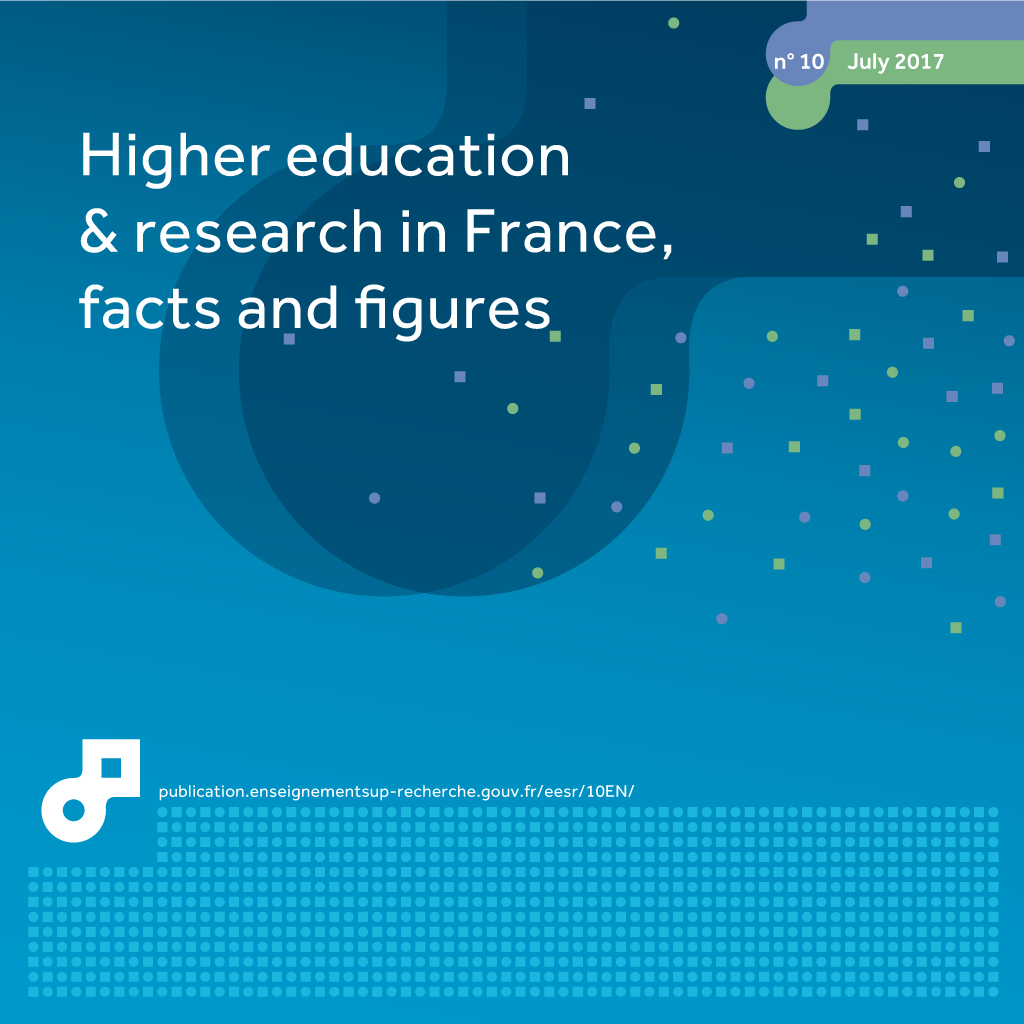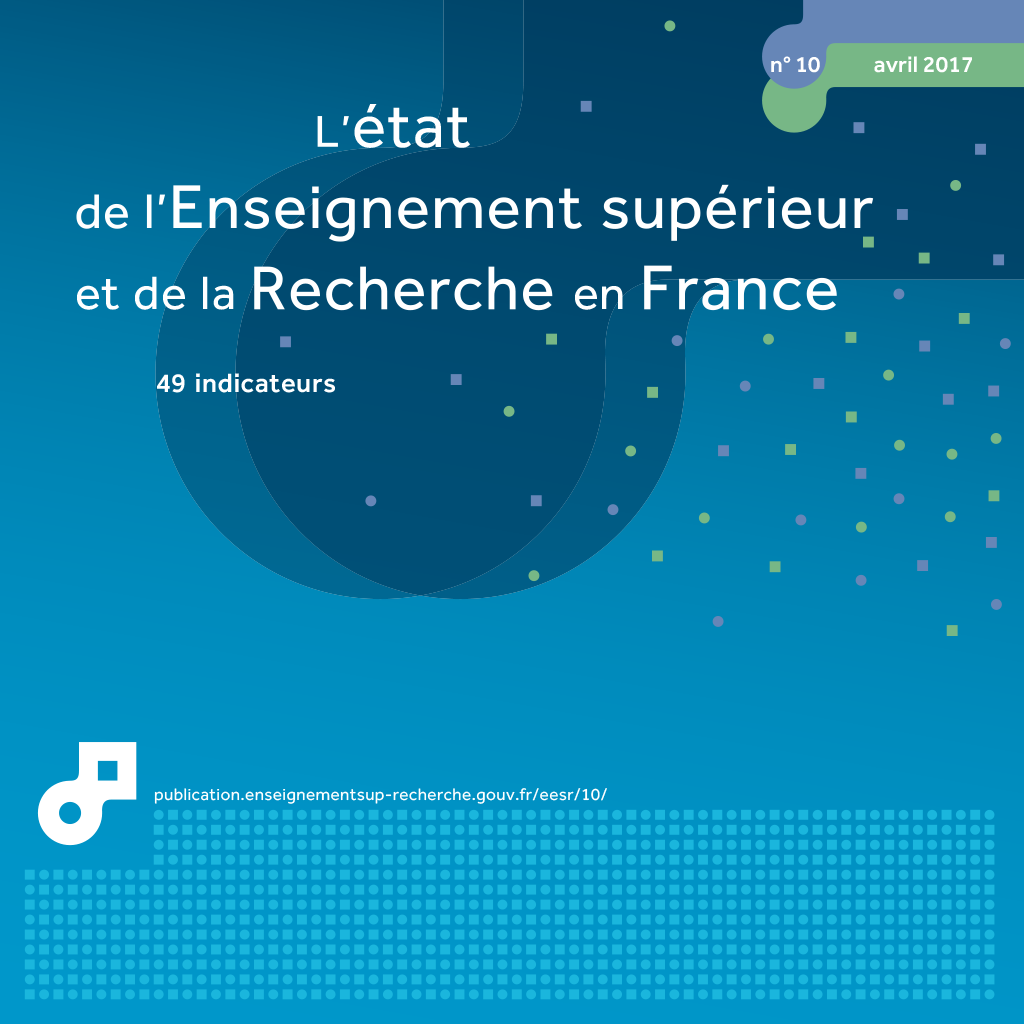16 schedules and pace of studies
Students’ schedules vary mainly according to the study programme. Selective study programmes are those with both the highest number of hours spent on taught studies per week and the most time devoted to personal study. The personal study time increases with the level of the studies, whilst there are fewer hours spent on taught studies. Students’ time budget will also change if they have a paid activity.
The time set aside for taught studies (lectures and tutorials) and personal study is spread unevenly according to the type and the level of study (chart 16.01). On average, excluding students in post-graduate programmes, students state that they attend nineteen hours of classes every week. More time is devoted to taught studies for undergraduates in selective study programmes with extensive educational supervision and a restricted number of students. Among these, the classes preparing for admission to the grandes écoles (CPGE) have a very high number of taught studies (34 hours a week), followed by the University Institutes of Technology (IUT) and Higher Technical Sections (STS).
The personal study time also varies with the study programme. There are several configurations when considering courses attendance time. One category includes fields of studies where the personal study time markedly longer that the time devoted to taught studies. This applies especially to healthcare, where students spend 31 hours a week on average on personal study (for fifteen hours of taught courses). Although not as time consumming, schedules in schools of art and culture follow the same pattern. Among sectors demanding fairly much personal study time, the students at CPGE have the most intensive study schedules, with 21 hours a week set aside for personal study added to the 34 hours of taught studies a week.
The average time spent on study related activities also depends on the study cycle: as the level of study increases, there are fewer hours of taught studies and more and more time is left for personal study (chart 16.02). At Bachelor degree level, study time is arranged around supervised courses hours (twenty hours a week on average) with less time set aside for personal study (fourteen hours a week on average). For Master’s programmes, there is a balance between taught studies and individual study time, as students spend seventeen hours a week on average in courses and sixteen hours studying by themselves. Lastly, post-graduate students only spend nine hours a week in courses, whereas personal study time takes up twenty hours a week on average.
Nearly 40% of all students state that they are satisfied or very satisfied with the organisation of their studies and their schedules. Nevertheless, students with the most taught study timeare those whishing the most to spend less time on this activity (23% of IUT students, 26% of CPGE students and 28% of STS students) (table 16.03). On the opposite, the students with the fewest taught study hours are those whishing the most to have more taught study time. Nearly half the students (45%) state that they would like to spend more time on personal study. Here also, the students spending the least time on personal study state the most that they would like to spend more time on this.
Lastly, nearly 15% of all students say that they are unable to attend certain classes (chart 16.04). The main reason given is that they are holding down a paid activityb whilst studying (6.2% of students) followed by overlapping courses (4.2%). Having a paid activityb alters student schedules significantly: when they are working as well as studying (46% of all students), the students declare two taught study hours and two personal study hours less on average per week.
How to cite this paper :
close
16.01 Time spent on study related activities by field of study (in hours, as %)
CPGE students spend on average 34 hours a week on taught studies (lectures, tutorials, practicals).
1 University courses
You can embed this chart to your website or your blog by copying the HTML code and pasting it into the source code of your website / blog:
close
16.02 Time spent on study related activities by level of study (in hours, as %)
Students at Bachelor degree level spend on average 20 hours a week on taught studies (lectures, tutorials, practicals).
You can embed this chart to your website or your blog by copying the HTML code and pasting it into the source code of your website / blog:
close
16.03 Satisfaction with the time spent on study related activities (as %)
55% of students studying Litterature, Languages, Human and Social Sciences would like to spend more time on personal study.
You can embed this table to your website or your blog by copying the HTML code and pasting it into the source code of your website / blog:
close
16.04 Non-attendance at certain classes and reasons for non-attendance (as %) 1
1 Multiple responses possible.
6.2% of students that they have been unable to attend certain classes as they were involved in a paid activity.
You can embed this chart to your website or your blog by copying the HTML code and pasting it into the source code of your website / blog:
close
Related statistical publications
 01 - Enquête nationale Conditions de vie des étudiant-e-s 2016 - Données socio-démographiques et académiques - Feres Belghith, Odile Ferry, Elise Tenret - March 2017
01 - Enquête nationale Conditions de vie des étudiant-e-s 2016 - Données socio-démographiques et académiques - Feres Belghith, Odile Ferry, Elise Tenret - March 2017 La première fiche thématique concerne les données sociodémographiques et académiques des étudiant-e-s. Il s'agit de la répartition des étudiant-e-s selon différents critères sociodémographiques et académiques.

 OVE Infos 34 - Panorama 2016 : Conditions de vie des étudiants - Feres Belghith, Jean-François Giret, Monique Ronzeau, Elise Tenret - February 2017
OVE Infos 34 - Panorama 2016 : Conditions de vie des étudiants - Feres Belghith, Jean-François Giret, Monique Ronzeau, Elise Tenret - February 2017 Il s'appuie sur les résultats de l'enquête nationale Conditions de vie des étudiants 2016, réalisée au printemps 2016 par l'OVE auprès d'un échantillon représentatif de la population étudiante en France.
Ces résultats montrent, par certains aspects, une amélioration des conditions de vie des étudiants : ces derniers se déclarent dans l’ensemble plus satisfaits de leurs études et parviennent (un peu) mieux à concilier activité professionnelle et vie universitaire.
Toutefois, ils confirment aussi la fragilisation croissante de certaines franges de cette population, que ce soit du point de vue de la santé ou des difficultés financières. Les conditions sociales des étudiants, et les conditions de vie qu’elles configurent restent un des éléments explicatifs des différences observées.
Cependant, l’origine migratoire, la nationalité, la parentalité ou le sexe sont autant de facteurs qui modifient également l’expérience étudiante. Ces différences vont nourrir une forte segmentation des parcours étudiants en termes de filières, de niveau d’études et de disciplines, et c’est au sein de ces clivages que l’on peut identifier des étudiants plus vulnérables que les autres.

 Repères OVE - Repères 2016 - Feres Belghith, Odile Ferry, Elise Tenret - February 2017
Repères OVE - Repères 2016 - Feres Belghith, Odile Ferry, Elise Tenret - February 2017 Translation
 Etat de l'enseignement supérieur et de la rechercheL'état de l'Enseignement supérieur et de la Recherche en France n°10 - Avril 2017
Etat de l'enseignement supérieur et de la rechercheL'état de l'Enseignement supérieur et de la Recherche en France n°10 - Avril 201716 - emploi du temps et rythmes d’études - Feres Belghith & Odile Ferry




